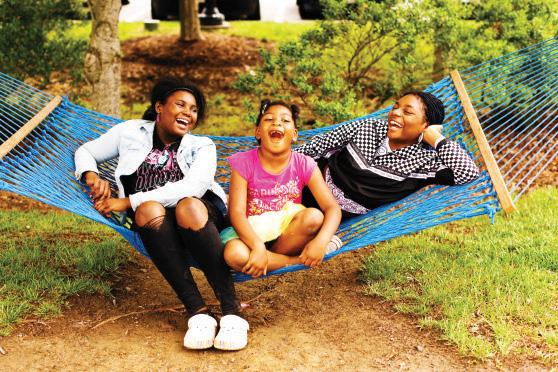








H
O U
To Experience the PDGA World Championship
August 21 - 25


PRESIDENT BLAKE DEMASO blake@blueridgeoutdoors.com
EDITOR IN CHIEF JEDD FERRIS jedd@blueridgeoutdoors.com
PUBLISHER LEAH WOODY leah@blueridgeoutdoors.com
ASSOCIATE PUBLISHER KATIE HARTWELL katie@blueridgeoutdoors.com
CREATIVE DIRECTOR MELISSA KENNELLY m.kennelly@blueridgeoutdoors.com
EDITORIAL & PRODUCTION
SENIOR EDITOR WILL HARLAN will@blueridgeoutdoors.com
GEAR EDITOR DOUG SCHNITZSPAHN doug@elevationoutdoors.com
DESIGNER/ART MANAGER REBECCA CENCEWIZKI art@blueridgeoutdoors.com
CONTRIBUTORS
DAVE STALLARD
GRAHAM AVERILL
ERIC J. WALLACE
LAUREN STEPP MARY BETH SKYLIS MIKE BEZEMEK
COPY EDITORS
JULIA GREEN, ROBERT MCGEE
ADVERTISING & BUSINESS
ACCOUNT EXECUTIVE BUCK BRICE buck@blueridgeoutdoors.com
ACCOUNT EXECUTIVE HANNAH COOPER hannah@blueridgeoutdoors.com
ADVERTISING CONTENT COORDINATOR AMANDA LIVERETTE amanda@blueridgeoutdoors.com
BUSINESS MANAGER MELISSA GESSLER melissa@blueridgeoutdoors.com
DIGITAL MEDIA
ONLINE DIRECTOR CRAIG SNODGRASS webdir@blueridgeoutdoors.com
CREATIVE CONTENT MANAGER SHANNON MCGOWAN shannon@blueridgeoutdoors.com
CIRCULATION INQUIRIES circulation@blueridgeoutdoors.com
ADVERTISING INQUIRIES advertise@blueridgeoutdoors.com
SUMMIT PUBLISHING
977 SEMINOLE TR PMB294
CHARLOTTESVILLE, VIRGINIA 22901
ASHEVILLE, NORTH CAROLINA
At 75, a man fulfilled a childhood dream of thru-hiking the Appalachian Trail with help from his dog.
When young kids discover the magic of camping.
A veterinarian incorporates pet safety into search and rescue.
Rekindling love for former outdoors favorites.
48
Great gear for Southern road trips.
Fresh tunes from Phish and 49 Winchester.

BLUERIDGEOUTDOORS.COM ©2024 Summit Publishing, LLC. ALL RIGHTS RESERVED FEATURES
GOT A STORY IDEA OR COMMENT?
submit@blueridgeoutdoors.com BLUERIDGEOUTDOORS.COM

Dog-friendly road trip destinations in the Blue Ridge.
Adventures were plentiful on a 16-day road trip in the Appalachians.
40
An adventurer shares her favorite gear for keeping her dog safe in the wild.
A North Carolina photographer documents the endangered red wolf.


In Jefferson County, historic trails lead you along majestic rivers, through a national park, and to endless outdoor adventures. Our welcoming towns make you feel at home and sometimes a voice from the past will echo in the breeze. Jefferson County is your first step to exploring West Virginia. Take it and you will quickly realize this is Where Almost Heaven Begins.


• Visit 4 breweries/cideries, make a purchase, and collect a stamp at each location.
• Return your completed passport with information below to the Visitors Center or mail your passport to receive your FREE SWAG! Redeem in person for your choice of prize. Mail-in prizes will be chosen at the discretion of staff.
• Collect a stamp from Old Town Cidery, and you will receive a bonus item!


At 75, Soren West fulfilled a childhood dream of thru-hiking the Appalachian Trail with help from his dogBY ERIC J. WALLACE
IT WAS 2016 WHEN SOREN WEST palmed his 9-year-old grandson’s shoulder and gazed out from the 5,250-foot peak of New Hampshire’s Mount Lafayette into a momentarily spotlit expanse in the 800,000-acre White National Forest. His long white beard and hair, cultivated over 1,850 northbound miles of Appalachian Trail thru-hiking, whipped in the howling, misty wind as clouds tumbled through the now blue, now angry sky like strips of gnarled cotton. West’s typically mild-mannered 8-year-old golden retriever, Theo, began to bark.
“And something came uncorked in me,” laughs West. “I let out this wild … howl. Suddenly every molecule of my being cried back at mother nature. It was joyous. A moment of perfect being.”
Looking back, the 83-yearold calls the incident a full-circle epiphany: The conviction to thruhike the A.T, came to him at age 12 on a summer camp trek to that very spot.
“Of course, life intervened and it took me many years to return to that dream,” says West. “But, for whatever reason, I never let it go. It stuck in the back of my mind.”
He earned a law degree from Yale University; settled in Lancaster, Pennsylvania; founded an eponymous firm; pursued a successful career as a trial attorney. West married and had five “wonderful, talented children” who went on to pursue their own successes and start families. Life was good. Thoughts of a 2,200-mile quest on America’s most iconic trail had all but vanished.
“Then, in 1996, I was standing in the living room, and it struck me like a giant whale crashing through the
ocean’s surface,” says West. “‘You have to hike the A.T. Wouldn’t it be wonderful to finish at Katahdin on your 65th birthday?’”
2006 came and it didn’t happen.
“I was busy with work and being a granddad, so I kept finding reasons to put it off,” says West. He’d have to refer so many clients. Why not wait until he closed the firm, then use the hike to transition into retirement?
West’s adult children chimed in around 2010.
“They started joking, like, ‘Dad keeps talking about this thing, but if he doesn’t start soon, he’ll be the first to hike the A.T. in a wheelchair,’” says West. “And I took their warning to heart.”
He bought a copy of David Miller’s guidebook, AWOL on the Appalachian Trail, researched gear and sought advice from trekkers who’d completed the route later in life. West also started training with golden retriever Theo, who was then about 2. They eased in with four-mile walks on hilly local roadways. Out-and-backs to nearby summits progressed to overnights and long weekenders in all kinds of weather conditions, including snow and freezing rain. Then the two took on Vermont’s 272-mile Long Trail.
“My wife would tease me and say Theo and I were from the same litter,” says West. “We were inseparable from the get-go. So, it wasn’t a matter of whether he was coming with me, but how to make it possible.”
The Long Trail brought valuable lessons.
“We set out south from the Canadian border and the terrain was rougher than I’d anticipated,” says West. The two hiked from 8 a.m. to 11 p.m. and, unable to find



a good spot to pitch the tent, slept in the open on a rocky hillside. The next day was so brutal, “I thought, ‘I don’t know if I can do this.’ We spent two nights at the first motel we came to.”
The pause restored West’s conviction. Adapting a less ambitious, shelter-to-shelter strategy would let him ditch his tent, tarp, and other gear to cut about 15 pounds of weight. Meanwhile, Theo tackled the miles admirably. A phone consultation with their vet brought special saddlebags that West could pack with 10-15 pounds of dog food and water.
“At that point, the most serious hiking I’d done was five nights in the White Mountains as a teenager,” he says. Research was one thing, being on trail quite another. Still, West considered the trip a success as, “it helped me understand what we were up against and overcome a fairly big learning curve.”
West shuttered his law firm in late 2015 and set out with Theo from Georgia’s Amicalola Falls State Park for the A.T.’s southern terminus at
Springer Mountain on February 21. The first 500 miles went smoothly aside from a pesky deep heel bruise that refused to heal. West hiked six days a week and spent the off-day at a hotel, inn, or hostel. He felt great and averaged about 15 miles a day.
A prior knee injury and related major surgery, combined with his age, enabled him to have Theo certified as a service dog. That meant that, with the proper vaccinations, Theo could travel in otherwise restricted areas like Great Smoky Mountains National Park. He not only crushed the trail miles, he was a perfect ambassador of doggy etiquette.
“I wasn’t worried about other hikers, but how he’d react to animals like deer or bear,” says West. But even encounters with the latter brought little more than perked ears and nervous glances toward his master. “I was a very proud dad, to say the least.”
The problems began when West switched to summer boots in Marion, Virginia. The heel
condition promptly worsened—and was diagnosed as plantar fasciitis— and he developed interdigital blisters that plagued him for the next 1,000 miles. A series of falls led to a torn rotator cuff, dislocated tooth and a sudden, frightening doctor’s visit in Maine.
His shoulder was swollen and needed aspiration. The alarmed doctor removed 45ccs of fluid and immediately hospitalized West due to high risk of blood infection. West spent four days on an antibiotic drip, watching the weather and wondering if he would heal in time to finish before impending snowstorms closed the northern terminus at Baxter State Park. A flurry of surreptitious phone consultations with doctor friends brought a cautioned release.
West caught a ride to Katahdin and summited on October 13, just days before snows closed Baxter for the winter. He then returned to the 100 Mile Wilderness and, with Theo by his side, completed the A.T. eight days later.
Looking back, West says the
quest probably would’ve failed but for two things. First and foremost was the now deceased Theo.
“I can say with absolute certainty that I would not have made it without him,” says West. “Theo was the best hiking buddy a guy could ask for. He pulled me through so many tough moments. He lifted my spirits whenever I was feeling down.”
Second was a sense of purpose.
“Had I gone in with the attitude that I’d ‘try’ to finish, I probably would have given up very early on,” says West. “But for me, this wasn’t optional — it was a calling that had haunted me for most of my life; it was something I had to do to feel fulfilled. That sense of purpose and urgency is what got me through. And it was absolutely worth all the pain, hardship, and suffering to get there.”
Interested in learning more about Soren and Theo’s journey? Check out the former’s recently released book, Northbound With Theo: A Man and His Dog Thru-Hike the Appalachian Trail at Ages 75 and 8 , which features more than 200 photos from their trip.








WHEN WE SAY WE’RE GOING camping, my daughters, who are both under 4, light up with a joy like it’s Christmas morning. And I kind of don’t.
You see, I want my kids to spend time outside, and I want them to see so much of the outdoors, to experience it in such an intimate way from such a young age that they are as comfortable and capable in the wild as they are in the mall. And to do that, they’ve got to spend time outside, a lot of time outside.
But that’s not easy. Camping with kids is nothing like camping without them. Mosquitos are a pest to me, but to my daughters they are a crying jag that can completely derail lunch. S’mores seem like a good idea until I’ve spent the last 30 minutes chasing my kids in a circle around a fire, and when we finally get the marshmallows cooked just right, they spit them out and say the don’t like them.
And sleeping with kids at the age mine are in a tent or a camper is like being trapped in a small space with a dozen hyenas. It’s not good. They don’t sleep until they pass out, sometimes while still standing up and jumping on my bed. Most of the
BY LAURA FORREST HOPFAUFtime when we camp, we’re up until one day turns into the next because my daughters somehow seem to run on batteries that last longer than any flashlight I’ve ever owned.
Watching toddlers all day is tiring at home. Watching them all day camping is like being partially blindfolded dancing around knives. Nothing is safe. Everything is something to jump off, put into our mouths, or pick at for no apparent reason. We love to find bird poop and poke it. We love to stick our hands into sap and then stick them in dirt until we become some kind of monster that’s impossible to get clean. And if there’s a bug, we’ll suss it out, just so we can cry about it being in our general vicinity.
It’s a lot of fun. But really, it’s a lot of fun.
My oldest daughter’s face the first time she woke up next to me in a tent at a campsite tucked against the New River in West Virginia is etched into my memory like rings inside the trunk of a tree, so deep I carry that moment in my bones. She was 10 months old, but she looked like she had somehow already found one of the secrets to life, like she knew there was a joy here that couldn’t be
bought or stolen or traded for.
The first time we took my youngest daughter camping, she was eight months old. We went to Assateague Island National Seashore on an unseasonably cold weekend. It rained almost constantly, and I had to layer her in so many clothes that she looked more blob than human. I don’t think I took her hat off the whole trip. But she got to see wild horses right on the beach. She got to watch them prance through the sand and turn into the wind, manes blowing like ribbons. When I held her in bed next to me, tucked along my side, I had nothing else to do but watch her face as she slept and listen to the waves as they beat themselves to sleep too, pulling the moon like a blanket with them.
Even at the end of last summer, when we made a final trip to Cape Henlopen State Park along the Atlantic seashore in Delaware, they suddenly had both become old enough to suck the life out of the days at the beach, to walk holding hands through the Delaware Bay at low tide, and point to hermit crabs and study little tiny fish. When my husband and I tucked them into the camper at night,
sun kissed and still a bit dirty, they smiled the whole time they fought going to sleep, and when they woke, they stretched into the sun, reaching for another day in the wild.
There’s a magic to the air when we sleep outside. There’s an intimacy in the wind whispering us to sleep that draws us closer. There’s a quiet peace in the sun waking us in a heap all together to birds singing.
Going to sleep outside is nothing like sleeping in bed at home. Camping isn’t at all like being in a house. It’s a lot more work to do it with a family. It’s planning and prepping and wrangling. And when we get home, it’s laundry and washing and cleaning and putting things away for much longer than our trip lasted.
But for all the work, for all the challenges, and tears, and all the things that go sideways every trip that I can never predict, sleeping outside gives us something that sleeping inside just can’t. And my daughters might not know how to read or do math or cook an egg, but they already know going camping, no matter where, is the best thing we’ll do all year.
fortunate. Discovering a second is rare. The ability to combine the two into a third? Alchemical.
Nancy East was blessed with clarity at a relatively young age. She wanted to be a veterinarian, and she made it happen. Decades later, she wielded the same decisiveness in becoming a key member of her community’s search and rescue team. Now she is fusing the two together to help people better understand how to safely enjoy the outdoors with their dogs. It started with an invitation to lead a section of a local community college course in 2022 and has continued to grow and take shape ever since.
“It just sort of evolved organically,” says East. “It just seems to keep showing up in my life, and I love it that it does.”
East’s childhood home in Fairburn, Ga., was always full of animals, including dogs, cats, birds, and snakes. Some were permanent family pets while others were temporary stopovers her parents rescued from roadsides and other precarious conditions. The animals were usually sick, injured, lost, or scared. Helping them became a way of life, a vocation, yet it wasn’t until she watched a trained professional save her dog, Bo, that East realized it could be her occupation, too.
Bo was a lab mix whom the family had adopted from the Atlanta Humane Society. When East was a freshman in college, he contracted Parvo. She happened to be home for her Christmas break and accompanied her mother and Bo to the emergency veterinary clinic.
“I remember going in the middle of the night and just being absolutely enthralled and fascinated by the care he received,” remembers East. “I'd never seen any of our pets get such hands-on critical care. I was really exposed to
it that night.”
She returned to campus for her spring semester and changed her major to Pre-Vet. Then, a few months later, East went on her first camping trip with some friends in northern Georgia. Again, something clicked.
“It was just like when I decided to become a vet, it was instantaneous,” she remembers. “This love affair with the woods was almost instant when I was on that trip.”
After earning both her undergraduate and veterinary degrees from Auburn University, East moved to western North Carolina in 1997 to work for Animal Hospital of Waynesville. She and her husband decided to put down roots in the area. Life got busy: three children, a slew of pets, and the establishment of her own vet relief business. The thought of becoming a search and rescue worker didn’t enter her mind until 2015 when news broke of a hiker losing her way off the nearby Art Loeb Trail.
“I thought, wow, this is something that on paper looks so much like what I do, a solo female hiker out there in the woods,” she says.
The story inspired East to join the Haywood County team. Like veterinary medicine, East was drawn to the idea of helping others. She showed up to the next monthly meeting and has been a part of the team ever since. Mike Street, a Haywood County Paramedic and the Director of the Haywood County Search and Rescue calls her outdoor knowledge “astounding.”
“She is physically capable of doing everything, she knows this area really well as far as all the trail systems, and she is proactive with search and rescue in terms of teaching people how to take care of themselves in the woods,” says Street, before nothing that, to his knowledge, East is the first
veterinarian to serve on the team.
While she officially retired from practicing veterinary medicine in 2020, East’s unique skillset makes her a valuable resource in an area known for outdoor recreation. In 2022, Virginia Plyler, the Lead Faculty Instructor for the Paramedic Program at Blue Ridge Community College, invited East to teach a canine safety unit for the program’s Wilderness Medicine course. The section was a hit, and Plyler says she plans to bring East in again for the fall 2024 semester.
“She’s captivating,” says Plyler. “She uses the real words. She doesn’t try to speak above anyone. She is able to explain things on all levels so that it doesn’t matter what your knowledge is coming into it, you are going to leave with the complete understanding that you need in order to apply that care.”
Wendi McKinney met East while serving together on the board of Sarge’s Animal Rescue Foundation. McKinney recognized that there was a great number of people who were moving to the area from elsewhere to take advantage of the adventure opportunities, but without some of the basic knowledge and training on how to do so safely. She began putting together classes and
workshops at Behavior Tails, a dog training facility in Haywood County, and invited East to teach a workshop on canine first aid. McKinney noted that the lecture drew a crowd, not only for its content, but the teacher.
“She knew just about everybody that came, and they came because of her,” says McKinney. “She filled the room based on her own personality and charisma.”
East has plans to teach more classes and clinics in 2024, both in western Carolina and beyond state lines, and says she enjoys the full, varied schedule of her current chapter. Whether it’s a search and rescue shift, a dog safety lecture, or an ambitious outdoor adventure of her own (In 2020, she set the record for fastest known time hiking all of the Great Smoky Mountains National Park’s 900 miles of trails), she is pursuing all of her passions.
“I have my hands in so many different little projects that don’t look alike,” she says. “I love this part of my career now. I’m still getting to use my veterinary brain, but just in a different capacity.”
For more information about East’s Upcoming clinics and workshops, visit www.hopeandfeathertravels. com/2024-speaking-and-workshopschedule/













Explore the treasured destinations of West Virginia. Hidden gems and breathtaking scenery await at every turn in the mountains of Berkeley County. Discover your next adventure in Almost Heaven.









GRAB THE LEASH AND GET READY for a tail-waggin’ good time. Sure, dogs sniff butts and eat garbage. But dogs are cherished members of adventure-loving families, which is why we’ve rounded up five wooftastic towns in the Blue Ridge. From the mountains of West Virginia to the Upstate of South Carolina, these bark-worthy burgs cater to canines and their two-legged companions.
It’s been said that Daniel Boone never traveled anywhere without two hunting hounds by his side. So it only makes sense for Boone—a North Carolina town named after the American frontiersman—to pull out all the stops for contemporary canines.
According to Ben Rogers, dog dad to pitbull mixes Milly and Mabel and owner of a local pet-sitting business called Ben’s Buddies,
Boone is a mecca for mutts and purebreds alike.
“There’s so many great places to explore with furry friends,” he says.
WHAT TO DO: Follow the 1.8mile Elk Knob Summit Trail to the eponymous 5,520-foot peak in Elk Knob State Park. Afterward, enjoy some charcuterie at one of the park’s 11 picnic areas. Just make sure to give Sparky a little nibble. WHERE TO EAT: For a caninefriendly bite, head to Appalachian Mountain Brewery for a pitcher of Hop Rain Drop—a modern IPA with heavy notes of mango, peach, and papaya—and a buffalo chicken pizza.
WHERE TO STAY: Catch some shuteye at The Horton Hotel, a downtown retreat with an entire floor dedicated to hounds.
Most know Dawsonville for moonshine and motorsports. After all, this tiny city has hosted a ‘shine festival since the ‘60s and is home to the Georgia Racing Hall of Fame. But there’s plenty for pups, too.
“We did not forget about our four-legged friends,” assures Dustin Heard, director of tourism at Destination Dawsonville.
WHAT TO DO: Beat the Georgia heat at Lake Lanier, a 38,000-acre reservoir with more than 100 islands that are just begging to be explored.
WHERE TO EAT: After a day on the water, take Fido to dinner at Big D’s BBQ. Pick a table on the patio and order yourself a redneck-style burger with American cheese, chili, and slaw, and a plain patty for the pooch. WHERE TO STAY: If your doggo
digs panoramic views, book a room at the Lodge at Amicalola Falls. Nestled in the mountainous terrain of Amicalola Falls State Park, this rustic chalet offers a solid selection of pet-friendly rooms.
In the early 1800s, Travelers Rest emerged as a stopover spot for livestock drovers and wealthy families traveling to and from the mountains. Though a lot has changed in the centuries since, this South Carolina city still accommodates all sorts of visitors, the four-legged kind included.
Aaron Crowell, owner of Travelers Rest Pet Sitting, enjoys plenty of pooch-approved activities with LB, his 5-year-old Chesapeake Bay Retriever.
“There's tons to do, from the















Swamp Rabbit Trail to the local state parks,” he says. “Plus, almost every restaurant has outdoor seating, and the local apartment complex has a free doggy park.”
WHAT TO DO: Lace up your jogging shoes and take Rover for a trail run in Paris Mountain State Park, a 1,540-acre recreation area located about 20 minutes southeast. If you’re looking for a challenge, finish the 10.6-mile Paris Mountain Big Loop and then go swimming in Lake Placid.
WHERE TO EAT: Fill your belly at Coastal Crust, a wood-fired pizza joint Crowell says is “pretty much the life of the party” in Travelers Rest. Wash it down with an ice-cold IPA from The Community Tap next door.
WHERE TO STAY: Rest your head at the Swamp Rabbit Inn, a bark-tastic bed and breakfast named after the town’s 28-mile greenway.











They say Virginia is for lovers. But in Abingdon, a small mountain village located about 130 miles southwest of Roanoke, it’s all about the dog lovers. That’s according to local Amanda Smith. As a licensed veterinary technician, owner of a doggy daycare called The Dog Lodge, and proud pawrent to five goldendoodles, Smith spends a lot of time exploring Abingdon’s houndish haunts and is happy to report that it’s a dog-gone delightful place.
“It’s a small town,” says Smith, “but it isn’t lacking in restaurants, breweries, shops, and trails for dog lovers.”
WHAT TO DO: If you’ve got a high-energy hound, take them for a cycle on the Virginia Creeper Trail, a 34.3-mile rail-to-recreation trail starting in Abingdon and traveling through Damascus, Va. Just remember that all dogs must be kept on a six-foot or shorter leash.


WHERE TO EAT: Dogs deserve fine dining experiences, too. That’s why Smith always takes her pack of pups to Rain Restaurant and Bar, an upscale eatery serving everything from octopus to ribeye. “They have an outdoor patio,” says Smith, “so I can take my dogs anytime, and the food is always delicious.”
WHERE TO STAY: Skip the hotel and camp at Abingdon Vineyards instead. Situated just minutes from downtown, the winery offers two private RV spots along the banks of the South Fork of the Holston River.
Wardensville is ruff country. Stroll around this tiny town of fewer than 300, and you’re sure to spot as many hounds as you do humans. Depending on the day, you might even run into Ashley Eklin and her two dogs: Ruxin, a four-year-old Corgi, and Bandit, a four-year-old border collie-spaniel mix.
Eklin moved to the Eastern Panhandle with her husband last year and quickly fell in love with woof-worthy Wardensville during a day trip.
“We are excited to continue to explore and take adventures,” she says, “and it's easier













Galleries | Museums | Shopping | Dining Hiking | Kayaking | Historic Downtown | Live Music and more, less than 2 hours away
EVERYTHING WAYNESBORO HAS TO OFFER





when our pets are welcomed and encouraged to join us.”
WHAT TO DO: Last time Eklin was in town, she took Bandit up to Big Schloss, a rock outcropping accessible via the 4.3-mile Wolf Gap Trail.
WHERE TO EAT: Post-hike, head over to Lost River Trading Post for espresso, pup cups, and yummy treats. If you’re craving some fresh produce, check out the Wardensville Garden Market less than half a mile down the road. “We are known to love the pups,” says Anne Kirk, marketing director.
WHERE TO STAY: Lodge your Labrador at the Cottage at Lost River Ridge, a three-bedroom mountain retreat with a doggy poo station for your pup and a bidet for you. According to hosts, the latter might just “change your life.”































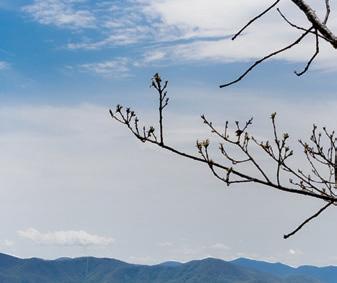








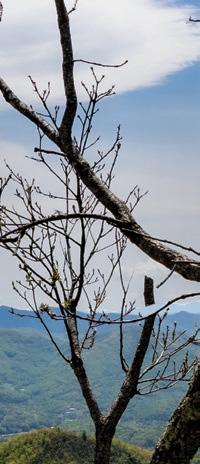












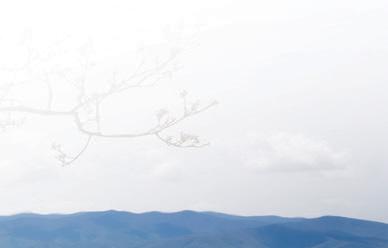






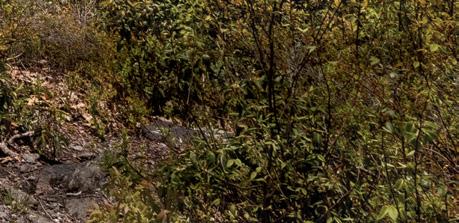






A SASSY AND LOVING HOUND MIX, Devi was just eight weeks old when she came into Andrea Johnston’s life. Last June, Johnston was still mourning the loss of her sweet elderly rescue dog when a friend of a friend reached out, relaying that three puppies had been found on a nearby interstate ramp and one of them who would soon go by the name of Devi.
“I have always let my rescue dogs find me,” Johnston says. “[When] my friend told me about the three puppies being found on the interstate ramp, I knew right away one of them was supposed to come home with me and rushed to meet them. [Devi] climbed in my lap and put her head on my heart. It was love at first sight.”
Johnston and Devi have since gone on many adventures. They began hiking together when Devi was young to get her used to it, and now it is their favorite outdoor activity. Devi especially loves places that have rocks for hopping across and sand for digging. A trip to Virginia’s Crabtree Falls was particularly special, as the adventure companions explored the scenic falls located not far off the Blue Ridge Parkway. Johnston snapped a picture of Devi striking quite the pose below cascades of the 1,200-foot falls, and the resulting image was voted by readers of Blue Ridge Outdoors as
the winner of our annual Adventure Critter Pet Photo Contest.
“This was such an exciting day for us,” Johnston says of the day the winning photo was taken. “It was one of Devi’s first real waterfall hikes to one of my favorite places, Crabtree Falls. Even though she looks full size in the photo, she was only a little over 4 months old. The trail was pretty busy, as
usual, but somehow, I managed to get that shot with no one in it. Devi absolutely loved meeting new friends and playing on the rocks.”
Johnston continues to take her young pup on many adventures, and people can follow Devi’s explorations at the Instagram account @devi_isababy
“She is such a sweet and fun girl and I feel so lucky to have her in my
life,” Johnston says.
This year’s Adventure Critter Pet Photo Contest was sponsored by Dominion Energy Riverrock. Photos of all adventurous pets were welcome—furry, feathered, spiked, or even scaley. Blue Ridge Outdoors received hundreds of submissions and thousands of votes for the ten finalists, but one came out on top.









A
slow tour of the region’s classic roadway becomes an action-packed Appalachian road trip
BY MIKE BEZEMEK
WE STARTED IN EARLY AUGUST. ON A MOUNTAIN ROAD trip that some travelers knock out in a long weekend, our plan was to do the opposite. We would spend a leisurely 16 days cruising the Blue Ridge Parkway from north to south. I made reservations at six public campgrounds, each a two- to four-hour drive from one another. We had hiking shoes in the truck, kayaks and mountain bikes on the roof, and our new travel trailer hitched up behind.
For 469 miles, the parkway follows the crest of the Blue Ridge Mountains, connecting Shenandoah National Park in Virginia and Great Smoky Mountains National Park in North Carolina. Averaging over 15 million annual visitors, the parkway is the most popular unit of the National Park Service. Most people go for driving tours, mountain lodges, scenic overlooks, wine tastings, and a crowded fall colors season. Not exactly our scene, honestly, given we usually travel for more adventurous activities.
For years, we never considered the parkway a destination itself. On occasion, we might drive a short section on the way to other adventures. But the parkway does pass through some of the most scenic and rugged parts of the Appalachian Mountains. A closer look at the surrounding terrain revealed intriguing options, including hiking, paddling, mountain biking, and other side excursions. Once we had our camper, a new type of road trip seemed possible: progress slowly, set up basecamps, and try to beat the crowds by venturing outward.
On day one, we drove south from Skyline Drive and continued onto the Blue Ridge Parkway. To reach the remote Milepost 0, we’d spent the prior week working north, with two basecamps, one to explore the Richmond area and another for long hikes in Shenandoah National Park . Thus, when we reached Humpback Rocks (Milepost 6), we decided to skip the steep trail to the ridgetop formation. Instead, we wandered an interpretive 1890s homestead before continuing south.
Despite it being a Saturday with mild weather, the northern roadway felt quiet and peaceful—far different than the southernmost sections we were familiar with. Along its length, the parkway doesn’t directly intersect with other highways but uses interchanges. Commercial vehicles aren’t allowed, and the speed limit is typically 45 mph or less. Not everyone follows those rules, but up here, at least, drivers mostly were.
Our first basecamp was Otter Creek Campground (Milepost 60.8) for three nights. This area doesn’t see much visitation, and the facilities seemed almost as old as the parkway itself, which was built over a 50-year period beginning in the 1930s. The nearby bridge over the James River (Milepost 63) is the parkway’s lowest elevation at 649 feet, and the warmer weather was perfect for some paddling.
The next day, I pushed off in my kayak near the town of Glasgow. I’d heard about the Balcony Falls run for years. With five miles of class II+ through the forested James River Gorge, this is a whitewater classic among Virginia paddlers and beginners. We didn’t have our ducky, which my wife prefers



for rapids, so I was probing solo. But a low summer flow around 750 CFS felt manageable, and I was soon welcomed by a local group.





The lone class III rapid is Balcony Falls, where the gorge narrows. We all came through with clean lines and continued downstream through fun boulder gardens. When a dark storm rolled in, we lowered our heads and paddled through driving rain. My wife was waiting at the truck, and the afternoon weather sent us west for drinks and dinner at the excellent Outpost Taproom of Devils Backbone Brewing Co. in Lexington.
On day three, we stopped by the Otter Creek Visitor Center to see a preserved section of the historic Kanawha Canal. There we met Justin, a tour cyclist who was riding the entire parkway on his way from Washington D.C. to his small farm in rural Georgia. We wished him luck before heading out on a side trip.
The visitor center exhibits at Appomattox Court House National Historic Park were fascinating, but the best part was walking through the restored 19th century townsite. Afterward, we explored downtown Lynchburg for a history walk and pub crawl. Highlights included a sweaty stair climb to the Lynchburg Museum in the Old Court House, followed by air-conditioned stops at Three Roads Brewing and Starr Hill on Main. Our James River basecamp was a winner, and we’ll be passing this way again someday.
On day four, we drove two hours south to Roanoke. We had high hopes for camping three nights at the county operated Explore Park (Milepost 115), which touts its 1,100 wooded acres as an adventure destination. The disc golf course was good fun, and the quiet park’s onsite brewpub made for a nice evening with fun people at a historic 1800s tavern. But the park’s RV campsites were oddly cramped, and the mountain bike trails felt like riding on staircases made of roots. With several child-focused zones, including the animatronic T-Rex Trail, the park seems better-suited for day-tripping families or those staying in rental cabins.
We had a nice time exploring the friendly mountain metro. We walked around Mill Mountain Park , home of the iconic hilltop star. We checked out the comprehensive Transportation Museum. We wandered around the quaint downtown to solid breweries and restaurants, including the Olde Salem Brewing Co. and Nawab Indian Cuisine.
On day five, we hoped to mountain bike the area’s top trail system at Carvins Cove, but heavy rain had other ideas. My wife opted for an inside day. I put on my splash top and paddled the Roanoke River Gorge, a three-mile class II run along the northern boundary of Explore Park. The typical put-in requires a steep quarter-mile hike from the parkway to river level. Other than the channelized rapid of Little Niagara, the run was pretty scrapey at summer levels and likely better in the spring.
One highlight was an afternoon side-trip to nearby Booker T. Washington National Monument , which preserves the plantation where the African American leader was born enslaved and departed from after the Civil War. Outside the excellent visitor center, walking paths lead through restored buildings and a demonstration farm. It was a quiet day at this little-visited monument, and we hung out with the ranger while she fed the animals.
Day seven involved a longer drive with brief stops, including a short walk at Rocky Knob (Milepost 167), a self-guided tour of the historic Mabry Mill (Milepost 176), and a nice museum at the Blue Ridge Music Center (Milepost 213). Thus far, we’d found the 217 miles of the Blue Ridge Parkway in Virginia to be surprisingly quiet, other than a busier section through Roanoke.
Once we crossed into North Carolina, traffic increased, and impatient drivers began tailgating. Due to construction closures on the parkway, we detoured through busier towns. On one hectic stretch of highway, we passed Justin. He was standing on the shoulder, next to his tour bike, looking a little tired. Unable to stop, I honked and waved hello.
Fortunately, after backtracking on the parkway, we found






















Doughton Park (Milepost 238) to be a picturesque landscape of rolling meadows and forests. We set up for three nights in a nice campground filled with regulars who walked laps together around the loop each night. During our stay, we learned that Doughton Park was much quieter than usual given the parkway closure just to the north. Day eight was spent hiking 10 miles through the breezy park, which offers mild summer temps due to an elevation around 4,000 feet. We passed fields of wildflowers, enjoyed open vistas, and stepped inside the restored Brinegar Cabin.
On day nine, we side-tripped to New River State Park for a warm Sunday float trip. The five-mile run from Gentry Road to the U.S. 221 access was great, with classic Appalachian scenery, just a handful of fellow floaters, and steady current.
On day 10, we caught up with Justin right after the famous Lin Cove Viaduct (Milepost 304). He described a harrowing ride on the recent detour. We were like old pals now, laughing about the simple days on the mellower parkway in Virginia. We all camped at Linville Falls (Milepost 316) for one night, where we hiked the short trails together to waterfall overlooks, while sharing stories of past adventures. For dinner, we devoured a Dutch oven meal of baked pesto. The last time we saw our new friend was on day 11, outside the Museum of NC Minerals (Milepost 331) where a small crowd had gathered to hear his tales. Hopefully, we’ll cross paths again someday.
From there, my wife and I diverted off the parkway to the popular Black Mountain Campground for three nights. On day twelve, we drove the switchbacks up to Mount Mitchell State Park to see the highest summit on the East Coast at 6,684 feet. A chilly but worthy hike took us through dense fog, slick rocks, and scraggly spruce-fir forest along the rugged spine of the Black Mountains.









On day 13, we resumed towing our camper along the parkway. We made a hiking stop at busy Craggy Gardens (Milepost 364.6) and dropped into the Folk Art Center gallery (Milepost 382). Then we zipped through Asheville. We were in familiar territory again, having driven the parkway several times around Pisgah National Forest
Our typical stop is the lush Davidson River Campground on US267, which makes for a great off-parkway basecamp near Brevard. However, if that’s full, a ridgetop option is Mt. Pisgah Campground (Milepost 408). Highlights around here are too numerous to mention, but we often mountain bike at Dupont State Forest , which mixes fun single-track with gravel routes leading to cascading waterfalls. At night, we might head downtown to Brevard Brewing Co. and walk to dinner nearby, including the casual Mayberry’s. Or, near the edge of town, another top brewpub with outdoor beer garden is Noblebrau.
Closer to the parkway, we’ve walked the pleasant paths at the Cradle of Forestry, which wind through the woods of a historic forestry camp that’s now an outdoor-indoor museum. Meanwhile, there are several day-hiking options on the parkway south of US276. The trails at Graveyard Fields (Milepost 418.8) are moderate, winding through a rugged creek valley with several waterfalls. Or turn west onto Black Balsam Road (Milepost 420.2) and hike the steep Art Loeb Trail to Black Balsam Knob and Tennent Mountain for panoramic views of the surrounding highlands.
On a prior trip, at the southern end of the parkway we continued east into Great Smoky Mountains National Park for more adventures. This time, we turned south toward a final basecamp near the Nantahala River for a weekend of paddling and mountain biking with friends. Along the way, we made a last stop at Richland Balsam Overlook (Milepost 431). At 6,053 feet, it’s the highest point on the parkway. Despite going slowly, our 16-day road trip felt like a whirlwind.
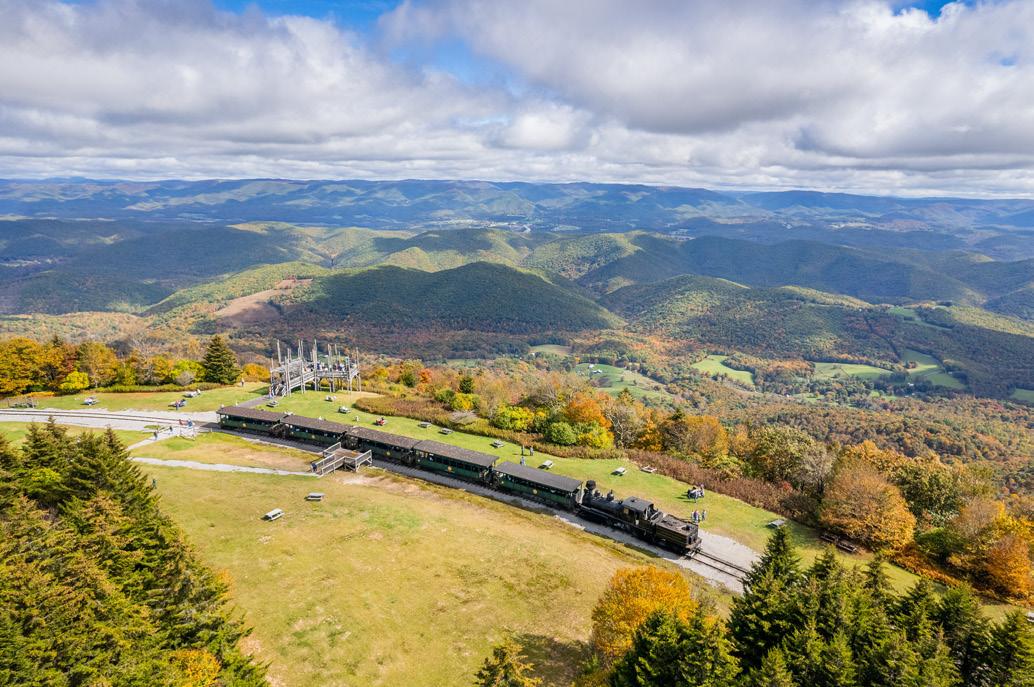




Pack up your car, motorcycle, or RV and crank up the tunes for an unforgettable journey through the Southeast. Tackle exhilarating hikes, soak in breathtaking views, and explore refreshing waterways accessible from both major highways and charming country roads alike. Regardless of your ride, each of these stops promise boundless outdoor adventures and memorable cultural experiences for the whole family.


Pulaski County, Virginia, combines natural beauty, rich history, and vibrant community life, creating a unique and inviting destination. Its cultural attractions and easy accessibility make it ideal for road trips, offering relaxation, recreation, and discovery.
Outdoor enthusiasts can enjoy boating, fishing, and camping at Claytor Lake State Park, while the New River Trail State Park is ideal for hiking, biking, and horseback riding. Draper Mountain Overlook provides stunning views, perfect for photography and picnicking. Historical sites include Draper Mercantile, Raymond F. Ratcliffe Memorial Transportation Museum, and Wilderness Road Regional Museum Annual events like the New River Valley Fair and Draper Days celebrate local culture and agriculture. Visitors can also explore local wineries, breweries, farmers markets, and charming small towns with plenty of pet-friendly dining and
accommodations. Or, simply take a scenic drive around the county and on the nearby Blue Ridge Parkway for a relaxing outing. After a long day of travel, unwind at one of the many hotels and bed and breakfasts the county has to offer.
Spotsylvania is celebrating its 300th anniversary in 2021 with a series of programs Situated on Claytor Lake, Rock House Marina offers boat rentals, a gift store, and restaurant with outdoor seating. It’s an ideal spot to relax, enjoy a meal, and take in the lake views!
• Roanoke, VA - 60 miles NE
• Charlotte, NC - 145 miles S.
• Knoxville, TN - 200 miles SW
VisitPulaskiVA.org




Start your day with freshly made croissants, a raspberry rhubarb crumb muffin, or a cinnamon bun from Bakehouse in Downtown Frederick. Satisfy your sweet tooth and wander the rows of apple trees and aisles of the farm market at Catoctin Mountain Orchard. For dinner, enjoy some Southern fare and live music year-round at Bentztown. Close out the night with a cocktail at McClintock Distilling Company’s Back Bar or a quirky local brew at Idiom Brewery
An urban downtown with shops and restaurants, just minutes away from endless outdoor recreation, is a roadtripper’s paradise. Frederick County is home to the City of Frederick, the second largest city in Maryland, and holds the key to unlocking a world of adventure. VisitFrederick.org
Take a scenic hike or picnic at Catoctin Mountain Park, right off of US-15. Easy to strenuous trails are available for hikers of all kinds! EXIT HERE!
Spotsylvania is celebrating its 300th anniversary in 2021 with a series of programs and events throughout the year!
Take in the tumbling water at Cunningham Falls, Maryland’s largest cascading waterfall, and The C&O Canal National Historic Park in Brunswick is perfect for biking sections of the 184.5-mile towpath stretching from Georgetown in Washington, D.C., to Cumberland, Maryland. This route provides scenic views of the canal, river, and surrounding nature for a tranquil experience. For a more thrilling bike ride, head to the Frederick City Watershed to delight in rocky and technical terrain. Before you head out of town, River & Trail Outfitters in Brunswick and Trail House in Frederick have all the supplies you need to hit the trails.
Fully immerse yourself in the outdoors by camping at Cunningham Falls State Park, where you can enjoy swimming, fishing, picnicking, and hiking. If you prefer staying in town, Frederick offers a range of cozy B&Bs and hotels, perfect for a restful night after a day of exploring.
• Gettysburg, PA - 35 miles N.
• Washington, DC - 45 miles SE
• Baltimore, MD - 50 miles E. PROXIMITY

Hardy County, with its scenic country roads, offers abundant opportunities for hiking, cycling, and horseback riding. Explore the picturesque trails of George Washington National Forest, where you can enjoy breathtaking vistas or take a guided horseback ride with Hidden Trails Stables in Lost River State Park.


Tributaries wind down the mountains feeding the five north-flowing rivers including the South Branch of the Potomac River , a favorite for fishing or floating. The Trough, where bald eagles soar, is a historic six-mile canyon, featuring towering rock walls accessed only by water or train. Check out Breezewood Adventures where you can rent kayaks and canoes for paddling or fishing or go camping along the South Branch . The South Fork and South Branch offer seasonal class I & II whitewater
opportunities and the Lost River disappears underground to emerge Cacapon River . Like so many of the mountain runs and man-made lakes, the North River is stocked throughout the season.


Looking for the perfect road trip destination? Highland County, Virginia, awaits. Reconnect with nature, jump into outdoor adventures, and soak up some small-town charm. As the least populous county in Virginia, there’s plenty of space for you!
• Richmond, VA - 185 miles SE WET, WILD AND WONDERFUL
Don’t miss West Virginia’s Branch Mountain Bluegrass Festival from July 18–20! Enjoy three days of music in a family-friendly setting with plenty of activities, or simply relax and soak in the tunes.
Trout Pond Recreation Area is a tranquil setting for hiking and enjoying canoeing, fishing, and swimming at Rock Cliff Lake . Nearby Trout Pond, at times not more than a large puddle, is the only natural lake in West Virginia. So, come for the day but plan to stay the night.
• Washington DC - 130 miles E.
• Charlottesville, VA - 130 miles SE
VisitHardyWV.com

Highland County’s winding mountain roads offer a glimpse of Virginia’s unspoiled beauty, evoking a nostalgic charm. New businesses and the art scene thrive, while annual events cater to the whole family. Experience breathtaking views from the Sounding Knob Fire Tower or challenge yourself with the Mountain Mama Road Bike Challenge. Stay off-grid at the brand new Monterey Campground, where the owner even provides motorcycle tours of the area’s scenic roads. Stargaze under the dark skies or hike the historic 1.5-mile trail at McDowell Battlefield Public fishing spots abound along the Bullpasture, Potomac, and Laurel Fork
rivers, offering trout fishing in pristine mountain streams. Discover a range of accommodations, from rustic cabins to modern Airbnbs, and explore unique shopping and dining experiences across the county.
PROXIMITY
Spotsylvania is celebrating its 300th anniversary in 2021 with a series of programs Sugar Tree Country Store in McDowell, Virginia, offers natural products like pure maple syrup, jellies, and handcrafted items, and serves as a “sugar camp” stop during the Highland County Maple Festival.
• Richmond, VA - 155 miles SE
• Roanoke, VA - 110 miles S.
• Washington DC - 190 miles NE
HighlandCounty.org

As the largest city in western Virginia, Roanoke offers a vibrant metro area within close proximity to an incredible variety of outdoor adventures. A visit to the Roanoke Region in Virginia’s Blue Ridge provides the opportunity to explore over 1,000 miles of trails for hiking, biking, and paddling.

DRIVE TO HIKE, BIKE AND PADDLE
Embark on an unforgettable road trip along the Blue Ridge Parkway , America’s Favorite Drive, through Virginia’s Blue Ridge. Discover iconic destinations like the Appalachian Trail’s Triple Crown of Virginia and Carvins Cove for hiking and mountain biking, or explore the Upper James River Water Trail for
PUB STOP!
Twin Creeks Brewpub, nestled in a historic tavern at Milepost 115 on the Blue Ridge Parkway in Explore Park, offers a unique and charming destination for visitors.

paddling. Dive into boating, fishing, and other water activities
Smith Mountain Lake ’s 20,000 acres. Roanoke Mountain Adventures offers gear rentals for river floating and biking on greenways, perfect for outdoor fun with friends and family. Join their guided tours for a unique, immersive experience and deepen your connection with the region.
• Richmond, VA - 190 miles E.
• Charlotte, NC - 200 miles S.
• Washington DC - 235 miles NE
VisitRoanokeVA.com



When it comes to exploring the heart of Kentucky, look no further than Bowling Green. This vibrant city, just off I-65, offers a captivating blend of history and a thriving cultural scene. From endless outdoor recreation to picturesque downtown streets lined with unique shops and eateries, Bowling Green is a place where the whole family can find their adventure.
Kentucky is known for bourbon and horses, but Caves and Corvettes is what makes Bowling Green stand apart. Explore the 400+ miles of Mammoth Cave National Park , the world’s longest known cave system, full of stunning geological formations. Don’t miss the new Buc-ee’s in Smiths Grove on your way! Or, head to the Lost River Cave in the middle of the city and embark on an underground boat tour, offering an ecoadventure for all ages. Above ground, you’ll find miles of hiking trails, summer music festivals, numerous local parks, and abundant lake and river activities.
Feel the need for speed at the Corvette Museum , where you can learn about automotive history, and drive a Corvette at NCM Motorsports Park
• Chattanooga, TN-195 miles southeast
• Knoxville, TN-205 miles southeast
• Atlanta, GA-310 miles southeast

Take a trip to Suffolk, Virginia, where you can welcome a fresh perspective, sample local dishes worth savoring, and catch glimpses of nature you’ve never seen before. With boundless outdoor recreation and brimming with undeniable charm, this coastal Virginia city is worth stopping for.


Suffolk, Virginia, offers a blend of natural beauty, rich history, and vibrant culture. The city features attractions like the Great Dismal Swamp National Wildlife Refuge for outdoor enthusiasts and wildlife observers, while history buffs can explore the Suffolk Seaboard Station Railroad Museum and Riddick’s Folly House Museum For thrill seekers, Skydive Suffolk offers a unique
Located near the intersection of 460 and 58, Suffolk’s first brewery, Nansemond Brewing Station, has live music, trivia nights, and all types of beer you could dream of! PIT
view of the region. Kayak or paddleboard to explore Suffolk by water on the Nansemond River on one of the city’s many lakes. Suffolk’s culinary scene includes local favorites, independent eateries, and waterfront dining. Annual events like the Suffolk Peanut Fest celebrate the region’s agricultural heritage. The city also boasts unique shopping experiences, local art galleries, and scenic drives through its picturesque countryside • Virginia Beach, VA -

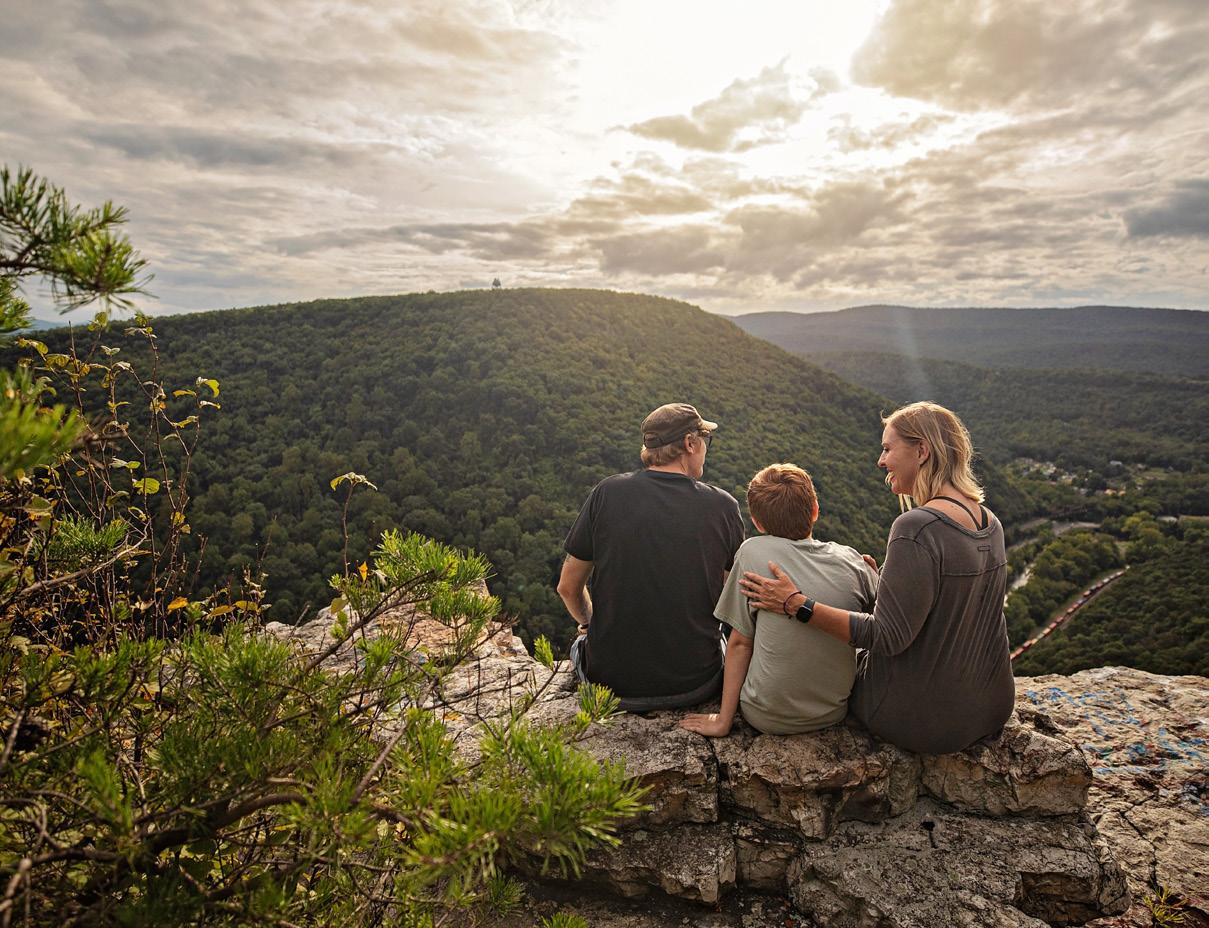

From an abundance of incredible outdoor recreational activities to amazing historic sites, dining, and entertainment venues - no matter your interest, passion, sport, or idea of fun, you’ll find a trail for just about any type of adventure in Allegany County, the Mountain Side of Maryland.
With 70,000 acres of public land and over 200 miles of developed trail systems, Allegany County, MD, is your stop for adventure off the beaten path. Ride along the Great Allegheny Passage and C&O Canal Towpath , two internationally recognized bike trails that meet in Cumberland, MD. Indulge your senses in the Mountain Maryland Tap and Pour Tour , Ice Cream Trail , and the Donut and Coffee Trail to fuel your exploration. Discover history and heritage along the Western Maryland Scenic Railroad and Historic National Road , Chesapeake & Ohio Canal , and Mountain Maryland Scenic Byways , where you’ll learn about important transportation milestones. Mountain Maryland is home to two Main Street and Arts and Entertainment Districts in Frostburg and Cumberland, MD, perfect to refuel and rest your head between endless adventures.
PROXIMITY
REST STOP
Spotsylvania is celebrating its 300th anniversary in 2021 with a series of programs 1812 Brewery - Located off I-68 just before the downtown exits. 1812 Brewery is Allegany County’s first farm brewery featuring a taphouse and large patio dining space. Each weekend the brewery features food trucks and live music.
• Pittsburgh, PA - 101 miles NW
• Washington, DC - 131 miles SE
• Charlottesville, VA - 160 miles S




Just an hour from Washington DC and Northern VA, Berkeley County, WV, offers a serene getaway from city life. Easily accessible via I-81, you’ll find yourself amidst picturesque countryside, historic homes, and outdoor recreation.
Just an hour from Washington DC and Northern VA, Berkeley County, WV, offers a serene getaway from city life. Easily accessible via I-81, you’ll find yourself amidst picturesque countryside, historic homes, and outdoor recreation. PIT STOP!
Spotsylvania is celebrating its 300th anniversary in 2021 with a series of programs and events throughout the year!
Please your palate with some fresh, local food and drink!
Orr’s Farm Market offers fresh produce and baked goods, while Black Draft Distillery crafts premium spirits. Enjoy craft beers at Amani Brewing or fine whiskey and seafood at Stoney’s Whiskey Wine & Raw Bar Brix 27 features a sophisticated wine bar and bistro menu, and The McFarland House provides fine dining in a historic setting. Thai Martinsburg gives diners a taste of authentic Thai cuisine, if you are looking to try something new.
The Martinsburg area is known for its lush forests ready for adventure and its world-class geocaching. Sleepy Creek Wildlife Management Area offers 23,000 acres of public land for bird watching, biking, hiking, canoeing, kayaking, hunting, and fishing. Yankauer Nature Preserve provides scenic wildflower walks, while Poor House Farm Park offers various recreational activities. The WV Route 9 Bike Path connects Martinsburg to Charles Town/ Ranson, popular for walking and biking. Berkeley County also features over 200 geocaches, including the Berkeley Gadgets Geotrail with 18 new caches launched in 2019. Passports for the trail are available at the local CVB.
Convenient lodging options right off the highway place you just minutes from nature and history. Alternatively, venture into the wilderness to find the perfect cabin or vacation home for a more secluded stay. Find your zen at Casa Om Potomac, a boutique hot yoga retreat on 63 serene acres along the Potomac River with ten bedrooms available. Enjoy a variety of classes in a stunning yoga room, plus workshops, a pool, and prescheduled spa services.
• Washington DC - 90 miles S.
• Baltimore, MD - 100 miles E.
• Pittsburgh, PA - 165 miles NW




Whether you prefer to adventure by land or water, Bedford, Va., offers something for families of all ages. Named the Top Small Adventure Town in 2020 and 2023 by Blue Ridge Outdoors readers, there are countless ways to get outside in this mountain town. Discover stunning overlooks at the Peaks of Otter, mountain bike singletrack at Falling Creek Park, and rent a boat from Smith Mountain Lake State Park. Throw in a scenic drive around to the area’s best galleries, shops, parks, and delicious eateries for a getaway you’ll want to repeat next year.
There are a variety of locallyowned restaurants featuring all types of cuisine. If you’re near downtown Bedford, stop into Beale’s BBQ & Brewery or Liberty Station for fresh eats. While visitors staying in the Forest area can’t go wrong with Benjamin’s or Corner Burger Forlakefront dining, check out Drifter’s , Jake’s Place , Mitchell’s , or The Landing
Since the first course was built in 2008, Bedford has quickly become a top destination for disc golf. Today, the parks and recreation department has developed more than 130 holes spread across five courses, each one offering unique challenges. The newest course, New London Tech Disc Golf Course , was designed by six-time World Champion Disc Golfer Paul McBeth and is a host course of the 2024 PDGA Professional Disc Golf World Championships.
Find a place to curl up at the end of the day in one of the area’s cabins, cottages, and campsites, or a room in a mountain lodge or lakefront resort. Bedford is a big county, so you’ll want to spend at least a few days to explore the area.
PROXIMITY Enjoy craft beverages? Be sure to explore the Bottled in Bedford Craft Beverage Trail featuring wine, beer, cider and mead. EXIT HERE!
• Richmond, VA - 130 miles E.
• Washington DC - 200 miles NE
• Charlotte, NC - 205 miles SW





Just a mile from I-95, the Embrey Mill town center has both chain and locally owned dining and retail establishments, perfect for a quick stop! EXIT HERE!
Spotsylvania is celebrating its 300th anniversary in 2021 with a series of programs and events throughout the year!
.and drink! Stafford County has a growing crop of local breweries and wineries to tickle your taste buds. Try to visit each of the County’s five breweries, each with a great variety of beers and unique atmosphere. For wine enthusiasts, Potomac Point Winery offers a charming setting and a range of wines to taste. The winery also hosts events and offers food pairings to enhance your wine tasting experience. Pair your drinks with delicious food! Stafford is a great destination for international cuisine, offering German, Mexican, and Italian dishes.
Whether you’re interested in arts and culture, history, outdoor adventures, or exploring new wineries and breweries, Stafford County has it all. Conveniently located right off Interstate 95, Stafford is perfectly situated between DC and Richmond and only two hours from the beach. Come and discover all that this vibrant region has to offer! TourStaffordVA.com
For activities like kayaking, fishing, walking trails, biking, and paddle boarding, you’ve come to the right place! Hikers and nature lovers can explore the scenic trails of Government Island, which offers unique history and diverse wildlife. For water-based recreation, Aquia Landing Park and Widewater State Park are perfect for swimming, fishing, and kayaking along the Potomac River. Additionally, Patawomeck Park offers sports fields, playgrounds, and picnic areas for family fun. Whether you’re seeking a tranquil escape or an adventurous outing, Stafford’s outdoor offerings cater to all interests and skill levels.
Stafford has many hotels located just off I-95 and US Route 1, making for a convenient stop. Head deeper into the county to discover cozy bed and breakfasts, or rent a campsite at one of the many campgrounds in the area. Aquia Pines Camp Resort is an excellent choice, as it is located right off Interstate 95, and offers RV or tent sites, rustic wood cabins, a dog park and an outdoor swimming pool.
PROXIMITY
• Washington, D.C. - 45 miles N.
• Richmond, VA - 65 miles S.
• Charlottesville, VA - 75 miles SW



Immerse yourself in the charm of Kentucky with the Kentucky Capitals Quest, your passport to discovering the Commonwealth’s treasures. From historic landmarks to local legends, this curated experience promises a perfect blend of excitement, culture, and genuine hospitality, ideal for a summertime road trip!
Pick up your Kentucky Capitals Quest Passport (and first visit sticker) to start your trip at one of the 11 participating visitors centers shown below:
Discover automotive excellence in Bowling Green, Kentucky’s Corvette Capital. Visit the National Corvette Museum for rare models, and enjoy high-speed thrills at NCM Motorsports Park’s 3.15-mile road course.


Frankfort, Kentucky’s Capital City, boasts history and charm. Visit landmarks like the State Capitol and Daniel Boone’s grave. Explore outdoor adventures at Capitol View Park and the Kentucky River, or



embark on the Kentucky Bourbon Trail® for distillery tours and tastings.
Hopkinsville, the Batter Capital of the World, thrives on its legacy of crafting exquisite baked goods. Celebrate at Batter Fest, sample local delights, and enjoy field-tofork tours. Famous for products like Ghirardelli Brownie Mix and Red Lobster Biscuit mix, Hopkinsville is a haven for culinary enthusiasts.
Lexington is the Horse Capital of the World, celebrating equestrian excellence and heritage. Explore horse farms, Keeneland Racecourse, and Red Mile’s harness racing. Visit the Kentucky Horse Park and enjoy events like the Rolex Kentucky ThreeDay Event. In Lexington, the horse is not just a symbol, but a way of life.
Amidst the scenic beauty of the Bluegrass State, London, the Cycling Capital of Kentucky, invites enthusiasts to explore its trails and routes. From National Bike Route 21 following Daniel Boone’s path to the Redbud Ride to 27 miles of gravel roads in Cane Creek WMA, London offers exhilarating rides for all levels.


Nestled within the Daniel Boone National Forest, Morehead is a premier destination for anglers seeking the thrill of musky fishing. Embark on an aquatic adventure at Cave Run Lake, one of the top ten musky fishing spots, and experience the excitement of pursuing the South’s most elusive freshwater predator.
Oldham County offers an authentic farm experience amidst scenic countryside and picturesque farms. Enjoy guided tours, farm-to-table dining, hands-on activities, and seasonal events, celebrating the region’s agricultural heritage. Experience an immersive journey into rural life in the Farm Tour Capital of Kentucky.
Owensboro, birthplace of bluegrass legends and the Bluegrass Music Capital of the World, offers a soulful celebration of this timeless music genre. Explore the International Bluegrass Music Museum, enjoy live performances, and join the Riverfront Bluegrass Series for an unforgettable experience.


Paducah, The Quilt Capital of the World, welcomes quilt enthusiasts to a vibrant tapestry of artistry. Check out the National Quilt Museum, indulge in exhibitions and events, visit charming quilt shops, and admire historic Quilt City USA murals for a colorful journey through quilting history.
Somerset, part of the Houseboat Capital of the World, invites you to explore Lake Cumberland, the ultimate water playground. As the birthplace of the houseboat, Somerset offers rentals, marinas, and vibrant events, ensuring unforgettable experiences on the water.
Winchester, the Beer Cheese Capital, takes you on a culinary journey. Discover the birthplace of beer cheese and indulge in its rich history. Follow the Beer Cheese Trail to sample unique variations and join us at the annual Beer Cheese Festival for a flavorful celebration.
Learn more about each stop and how to get started at KentuckyCapitalsQuest.com


With some of the best hiking and cycling in Maryland, the town of Thurmont has earned numerous accolades. Ranked among the Top 10 best small towns in Maryland in 2022 and 2023, and the top five small towns to visit by World Atlas, Thurmont is also recognized as a top lake destination by the state of Maryland.


Thurmont is a perfect destination for visitors of all ages and interests, offering something for everyone yearround. Conveniently located just an hour from DC and Baltimore and 15 minutes south of Gettysburg, PA, it’s easily accessible for road trips. Outdoor enthusiasts, foodies, and animal lovers will find plenty to enjoy, from locallyowned restaurants and orchards to the Catoctin Wildlife Preserve , home to over 500 exotic animals and safari rides. Summer activities include visiting the falls,
Roddy Road Covered Bridge Park, just two minutes off Route 15, offers a serene setting with its historic covered bridge, perfect for picnicking, leisurely walks, and photography.
camping, and enjoying the beach Catoctin State Park , as well as hiking the numerous trails in Catoctin Mountain National Park . Be sure to visit Uncle Dirty’s Brew Works , 10 Tavern , and Thurmont Kountry Kitchen for excellent dining and entertainment options. Historic Main Street is also a must-visit for a small town feel in a picturesque setting!
• Gettysburg, PA - 20 miles NE
• Washington DC - 60 miles SE
• Baltimore, MD - 65 miles SE SOMETHING FOR EVERY PROXIMITY
ThurmontMainStreet.com














ADVENTURING WITH DOGS COMES WITH certain challenges. Not only do you have to make sure furry friends are permitted to hike on trails and that temperatures will be safe for them, but you also have to consider their general wellbeing. Without the comforts of home, your dogs might struggle to fall asleep at a campsite or end up with pickers in their paws. So we’ve rounded up some essential gear items for dog-safe exploring in the great outdoors.
Most dogs prefer cold environments, but many of them are heat intolerant, making summer travel challenging, particularly in the sweltering Southeast. The Ruffwear Swamp Cooler Dog Vest is a unique piece of gear that
BY MARY BETH SKYLIScan help mitigate overheating. My rottweiler wore this vest in 90-degree heat, often using it even on small walks to the park. It's designed to absorb water and keep your dog mildly wet beneath the baking sun. Some dog owners like to freeze this vest for added cooling during hot adventures. Like Ruffwear’s standard dog vests, the Swamp Cooler vest has an easy clip-on design that stays secure even when your dog runs wild.
Ticks have become a huge nuisance, and the disease-carrying parasites love burrowing into doggy armpits and bellies. Even if you spend time scanning your pups after backyard jaunts, ticks often manage to remain undetected long enough
to latch onto your furry friend. Like humans, dogs are prone to tick-borne illnesses like Lyme disease. NextStar Flea and Tick Topical cream for dogs is a great deterrent. The solution is quick to take effect, designed to be used in the warm, moist areas of the body that ticks love. It’s also waterproof and lasts for 30 days. This solution is also a great addition during off-tick times since it deters other critters like mosquitoes and fleas from bugging your pup.
A doggy bowl is the kind of item that is easy to forget until you really need it. Sure, you can dump water into your hand so your pup can lap it up, but that tends to be wasteful and a little slobbery. The Mountainsmith K-9 Backbowl is a unique doggy



Dickenson County is home to three Virginia Scenic Rivers (Russell Fork, Cranesnest, and Pound) that are ideal for kayaking, tubing, and family fun. Stay in one of the five nearby campgrounds or in the cabins at Breaks Interstate Park, which has many trails for hiking and horseback riding, ziplining, bike rentals, pedal boats and more! Test your skills at Dixon Shooting Sports, hit the ATV trails, and visit Birch Knob Tower on a clear day for a view of six states!






bowl that packs easily and keeps puppy thirst quenched. It folds into a small square that can easily be tucked away in jackets, running vests, or even pants pockets, and it holds 1.25 liters, containing a PVC-free TPU liner that prevents the bowl from absorbing water and other debris. So when it’s time to start hiking again, you can simply dry it off and get going.
Sometimes trailheads don’t have trash bins, which means that you end up lugging your doggie doody home in your car. The whole process is pretty crappy. But the Kurgo Tailgate Dumpster is a gamechanger. The 100% silicone dumpster has a magnetic backing that can be fastened to your car. Another magnet keeps the lid of the bin closed, allowing you to stuff those baggies into the bin during transit. At first glance, it seems like the dumpster could move around or become dislodged during travel, but this bin easily stays fastened even during highway travel.
Dog beds are usually fluffy, big, and bulky,




Explore miles of scenic trails, cool off with whitewater rafting and get sky-high views during a rock climbing or ziplining trip.
Request a free travel guide to start planning your trip to GO GORGE!






easy to clean, and cushioned enough to use in uneven or even rocky terrain. The internal memory foam is cushy and comfortable, and compression handles allow the user to easily pack it up when it’s time to hit the road. The bottom of this dog bed is even built with waterproof materials to keep it from becoming extra saturated during those overnight camping trips. These beds also come in three different sizes, and the company offers a 100day money-back guarantee.
Most dogs aren’t particularly fond of wearing shoes, but sometimes they need an extra layer of protection against desert pickers and jagged rocks. Boots like the Muttluks All-Season Dog Booties can come in super handy whether you’re on trails or walking across hot pavement during the summer, protecting sensitive paws from becoming injured. These boots also pull their weight in the winter when snow quickly turns into ice in the fur of puppy paws. Though your pup might fight you while you put them on, the booties can go a long way when it comes to keeping your pup’s feet healthy and intact.







september 19-21 , 2024
three nights of music & camping with the infamous stringdusters
Daniel Donato's Cosmic Country • The Lil Smokies
The Last Revel • Dangermuffin
Jon Stickley Trio • Falco & Book play Garcia
The Wilson Springs Hotel • Isaac Hadden
Florencia & The Feeling • TC Carter Band
The Fly Birds at pop’s farm in martinsville, va
2 s tages • outdoor adventures fo od • ca mpin g • family fun
FEW PHOTOGRAPHERS IMMERSE themselves in the wild as deeply as James Ford. This outdoor photographer lives on a boat, climbs deep into caves, spends long nights in swamps, and sleeps in trees to photograph wildlife. He also finds wildlife photography opportunities while longboarding through urban landscapes late at night.
Self-taught and using only a few used lenses, Ford has become one of the premier wildlife photographers in the Southeast. He is especially recognized for his photography of red wolves—one of the most critically endangered species on the planet. Only 25 red wolves remain in the wild—all in the northeast corner of North Carolina where James resides.
BRO: How did you get into wildlife photography?
JF: For a while in my life, I was lost and didn’t have a purpose. I found it through a camera.
My first camera was a crappy YouTube camera. One night, coming home from work at a pizza parlor,
I saw a coyote in the shadows of a Walmart parking lot. I decided to follow it. Eventually, I started photographing coyotes. I quickly learned the different coyotes in my part of town and their personalities. I still didn’t know how to work a camera, though.
Photographing red wolves is what taught me real photography. The last wild red wolves in the world live in a wildlife refuge nearby and are on the brink of extinction, so I committed myself to photographing them—one of the most rare and elusive animals in the wild. I went out before dawn and late at night, in the rain, fog, wind, and cold. Those things forced me to learn every setting on my camera. I figured the better image of a wolf I could get, the more people would care about them.
BRO: What have red wolves taught you?
JF: Red wolves have amazing and diverse personalities—some are curious, others are secretive. They also have deep family bonds, and their social interactions are
Last month, a beloved juvenile red wolf named Muppet was killed by a vehicle strike —the fourth red wolf road mortality in the past year. Muppet’s father was also killed by a vehicle strike six months earlier along the same stretch of Highway 64, which runs through Alligator River National Wildlife Refuge in North Carolina.
Muppet’s tragic death brings North Carolina’s beleaguered red wolves one step closer to extinction. Only 25 red wolves remain in the wild, making them the most endangered wolves on the planet.
Muppet — also known as 2410M — was the first-born of his pack and was named for his conspicuously long neck. After Muppet’s father

incredibly complex.
I started photographing red wolves when there were only seven or eight left in the wild. Now their numbers are up to 25, but they are still dangerously close to disappearing from the wild. Gunshot is the leading cause of mortality, and vehicle strikes have killed four red wolves in the past year.
Red wolves—and coyotes and other predators—are not the villains they have been made out to be. They are brilliant, adaptable survivors with families to feed and pups to raise. I am awestruck by them.
They are an important and healthy part of the landscape. I hope we can find a way to coexist.
BRO: Any wildlife photography tips or insights?
JF: Do what you fear. I was claustrophobic, so I decided to start caving. I was terrified of heights, so I started sleeping in trees.
Wildlife can sense your intention. If you move through the landscape with calm and ease, and with an attitude of respect, they will sense that and become more comfortable with you.
I often walk barefoot, which allows me to move without easily alerting wildlife of my presence and it’s less intrusive.
BRO: What have been some memorable photography moments?
JF: I brought my 11-year-old son with me to photograph red wolves early one morning. He got to hear the red wolves howl in the wild just before the sun came up. Right after the howl, a red wolf ran across the field— and then stopped and just stared at him for a second. It was a beautiful and humbling moment for all of us.
View James Ford’s wildlife photography on Instagram: @wildlifeofvb
died last fall, Muppet stepped up to fill in his role. Muppet helped protect the pups that his father left behind and even looked after his mother.
Muppet was less than two years old when he died. In addition to Muppet and his father, two other red wolves have been killed by vehicles in the past year in the same area.
Fortunately, there is a solution already in the works: wildlife crossings across Highway 64. Wildlife crossings in the red wolf refuge are a win-win: they protect human lives and can save red wolves from extinction. In addition, they would safeguard dozens of other species ending up as roadkill, including black bears, bobcats, and river otters.
Wildlife crossings also protect human lives.
Wildlife collisions kill more than 200 people in the U.S. every year and cause $10 billion in damages. North Carolina is considered by insurance companies to be a high-risk state for wildlife collisions, and seven percent of all vehicle crashes statewide involve animal strikes.
An anonymous funder has recently committed to matching $2 million to build wildlife crossings in the red wolves’ refuge. If an additional $2 million can be raised this summer, it could be leveraged to generate $20 million in state and federal funding for wildlife crossings in the red wolves’ refuge.
Your support could give red wolves a fighting chance at survival. Learn more at saveredwolves.org.
THE TEXT WAS SIMPLE: “HEY, I’m burning a bunch of shit at the property. Anyone is welcome to join.”
It came from a good friend (we’ll call him “Teddy,” but the names of individuals have been changed to protect the innocent), who owns a lot of acres of land out in the middle of the county, and it was sent to our Whiskey Wednesday group chat—the guys that used to get together weekly to ride bikes or ski depending on the season. I don’t like to speak for the whole crowd of gentlemen on that text string, but I’m willing to guess that it was easily the most exciting text any of us had received in 2024.
More details came later in the day from “Teddy.”
“There will be an excavator, diesel fuel, and leaf blowers to stoke the fire.”
It was all very enticing, but the extra info was unnecessary. He had us at “burning a bunch of shit.” Most of us RSVP’d “yes” immediately, which was a small miracle all on its own. It’s hard to get my group of friends together for planned adventures these days; it takes weeks of massaging various schedules to get a group ride on the books. But we were all willing to drop everything on a Tuesday night to stand around a giant fire and stare into its flames.
And it was one hell of a fire. Teddy had some trees and brush cleared from his land to make way for a septic system and all that oversized kindling had to be disposed of. Burning it seemed like the most logical solution, so he used an excavator to create a burning pile in an open field. Imagine a massive pyre for a Viking king— that’s the scale we’re talking about here. Diesel fuel helped get the fire going and the excavator was used to continuously feed the flame with fresh pieces of large lumber. Because a dad can never pass up a good teachable moment, some

of us decided we should bring our sons to experience the inferno. There were a handful of kids there, from ages 9 to 15. It’s tough to find a single activity that can entertain a group of boys with that sort of age spread, but burning a bunch of sticks in the middle of a field seemed to do the trick.
We taught them important life lessons, like how to make Molotov cocktails out of Miller Lite cans, and the danger of an open flame climbing up a stream of gas.
“I believe that children are our future. Teach them well and watch them lead the way.” Or something like that.
It sounds haphazard, but there were safety measures taken; an emergency bucket of water was always on hand. And I think it’s important to put things like “danger” and “irresponsibility” in context. Yes, we created a large fire, but at no point did anyone try to jump over that fire with a bicycle. We talked about it, but we didn’t do it. I would like the jury to acknowledge our restraint.
Soon, our teenage boys were driving the excavator, picking up logs with its long arm like that claw game at the arcade, and the smaller children were operating leaf blowers, which acted like jet fuel on the flames. It had a Lord of the Flies
vibe to it, and the whole scene had all in attendance smiling from ear to ear.
I don’t want to be closed-minded and presume that big fires are strictly the territory of dudes, but most of the evidence I’ve gathered over my 47 years on this earth seems to suggest just that. It’s possible that women have simply evolved past the point of being mesmerized by an open flame. I asked both my wife and daughter if they’d like to join us and stand around that giant pile of burning logs, and they declined immediately.
Conversely, when I asked my 15-year-old son about the adventure, he responded instantly with a resounding “of course.”
My daughter saw some videos of the situation the next day and asked with honest concern, “Who was in charge out there? Were there any moms?”
There were no moms present. It was just a bunch of guys, from age 9 to 52, gazing into the heart of a raging fire, contemplating big picture concepts like mortality and the precise melting temperature of an aluminum can.
It had been a while since I had hovered around a fire like this. I blame the pandemic, which has had some curious side effects. A lot of
people have reverted to their prepandemic ways and are going to the mall instead of camping and riding bikes on weekends. You’ll notice a lot of people are selling the bikes and RVs they purchased during that two-year hiatus from real life. You can get campsites at popular campgrounds again. Personally, I haven’t given up on the adventures or the camping, but I have stopped having as many backyard campfires. That was our go-to way of socializing during the pandemic. We’d sit outside around a fire pit, drink cold beverages, and try not to get each other sick. We did that a lot. We did that so much that I haven’t had a fire in my backyard in probably a year. Pardon the pun, but I think I was burned out.
But this giant burning pyre re-stoked that primal interest in a bonfire. Maybe it was the size of the thing—at certain times throughout the night, the flames reached second-story status—or maybe it was the heavy machinery involved in the process. But I like to think it was the camaraderie of the event. A group of friends dropped everything, drove an hour into the middle of nowhere, to burn some shit together in the middle of the week. I could use more of that these days.













Travel season is upon us and the following gear will up your experience, whether you are heading out for a long weekend or planning to drive off for an extended aventure.





 BY DOUG SCHNITZSPAHN
BY DOUG SCHNITZSPAHN
Megamat Duo 10
Spreading out at 80 x 59.8 x 4 inches in queen size, this monster of a sleeping pad makes your tent feel like home, giving partners plenty of space to stretch out but still feel close. Selfinflating, it’s built of sturdy polyester that’s PFC-free, meaning it will comply with upcoming laws limiting PFAS in outdoor products. $350; expedusa.com

Cruise Terry Polo

Straight from the beaches of the Jersey Shore, this shirt has the class to look at home on a sailing trip and guts to mess around back on the boardwalk. Made from 100-percent cotton, it’s ideal for days on the road when you are hopping in and out of the water. $45; jettylife.com
Portable Power Station Cube 2000
Power on demand is essential if you want to hit the road for a long jag. You can work from camp, post all those Instagram glory shots, and keep any other needed electronics humming. Ringing in at a reasonable price point, this portable power station pumps out 2200W of AC power, offering charging capabilities of up to 2048Wh of power in just 1.8 hours. $1,199; cubeseries. segway.com
Abisko Trail Stretch Shorts
A good pair of road trip shorts needs to be able to handle a host of situations—from comfort for hours behind the wheel to taking on an impromptu hike to looking good at a new brewpub. Enter these tough, stretchy shorts that can handle a lot of abuse and pack down small in your bag when you’re not wearing them. Bonus: All the materials are PFC-free and Fjällräven guarantees a lifetime of repairs. $125; fjallraven.com
Egmont Azure
We cannot stress how important the right pair of shades are to any road trip—you need to protect your eyes when you’re spending hours staring at that yellow line in the harsh glare of the summer sun. Polarized and color-enhancing, this lens version of our favorite of Fuse’s frame styles is a winner for both the drive and sports ranging from fishing to mountain biking along the way. $80; fuselenses.com
14’ Altimus Bell Tent
The road trip itself is a blast but arriving and setting up a base camp that feels like home far from home is the goal. Surprisingly easy to set up, this big tent with room to stand up and seven big airy windows—that can be shuttered in a storm—is just the ticket for a bit of class out in the wild. The BCI cotton and recycled oceanbound plastic material is water repellent, so you feel good physically and ethically too. $1,130; whiteduckoutdoors.com

Grip Tight Backseat Protector
We love our dogs; we don’t love what those fur babies do to the back seat of our new 4Runner. Rest easy with this cozy seat protector, which will keep your car’s value but still give your best bud a place to curl up on long rides. The material is the same stuff Orvis uses in its dog beds, and its water-resistant, machine-washable, and made with 90-percent recycled materials. $139–$179; orvis.com
UL60
Yep, you need another cooler. Here’s why. Injected molded with closed foam and tipping the scales at just 21.5 pounds, this baby will keep food and drinks cool for days (seven according to Engel) and won’t strain your back when you haul it around camp. A wire basket helps organize stuff you don’t want lost in ice and a divider keeps kid drinks separate from the grown-up beverages. $200; engelcoolers.com
Aviant Duffel Pro 90
This one bag to haul it all is a road trip godsend— stuff everything you need inside the 90-liter duffel and toss it in the back of your vehicle. The stowable shoulder straps can morph into a carrying handle and compression straps inside help you cinch everything down. $160; deuter.com

Best New Music from the Blue Ridge and Beyond
BY JEDD FERRIS AND DAVE STALLARDcurate a playlist of new music, mainly focusing on independent artists from the South. In June we’re highlighting new tunes from 49 Winchester, Red Clay Strays, and Phish.
“Fast Asleep”
Next month, fast-rising Virginia alt-country band 49 Winchester releases the new album, “Leavin’ This Holler,” which was made with help from producer Stewart Myers in various studios across the country while hard-touring group gigged incessantly, opening for the likes of Tyler Childers and Luke Combs. Preview single “Fast Asleep” is a big-hearted twangy rock ballad that evokes a fullthroated Chris Stapleton epic, with a sweeping string arrangement that features the Czech National Symphony Orchestra. – J.F.
“Evolve”
Ears can catch some fresh Phish this summer, courtesy of the jam titan’s new studio album, “Evolve,” which comes out July 12. The title track is an upbeat, melodic rock tune with orchestral strings that lift the arrangement, while guitarist Trey Anastasio offers big picture reflection about not dwelling on trivial problems. Phish is set to embark on a lengthy summer tour that includes the band’s own four-day Mondegreen Festival in Delaware in August. – J.F.
“Southern Accents”
It’s hard to determine just how many chapters the songwriting of Tom Petty would occupy in the Great American Songbook, but there is no denying that his contributions
would be significant. A bevy of iconic country music stars recently released a collection of Petty’s work, “Petty Country: A Country Music Celebration of Tom Petty,” that includes Dolly Parton offering a stunning interpretation of “Southern Accents.” Parton’s lofty vocals are lifted by a soaring string section, offering a beautiful homage to what Petty himself considered to be one of his finest songs. –
D.S.“The Ternions”
Banjo picker Nathan Bowles is best known around the region as a member of old-time expansionists Black Twig Pickers, but this month he’s releasing a new album, “Are Possible,” with his own trio project. The first revealed track, “The Ternions,” is a powerful, acoustic-based instrumental, with Bowles’ droning fret work elevated in intensity by the driving rhythm provided by double-bassist Casey Toll (Jake Xerxes Fussell, Mt. Moriah) and drummer Rex McMurray. – J.F.
“Wanna Be Loved”
Shot through with old school Sun Records rockabilly vibes, the Red Clay Strays are establishing themselves as one of the hottest bands in Americana. Following a recent appearance on The Tonight Show with Jimmy Fallon and in the midst of a nationwide tour, they will release their new record, “Made By These Moments,” produced by the Grammy-winning Dave Cobb, this month. On “Wanna Be Loved,” singer Brandon Coleman grittily asks seminal questions: Am I good enough? Have I worked hard enough? Am I important enough? And within the lyrics he offers a lament to every insecurity anyone seeking affection or validation has ever felt. – D.S.
“Low Sun”
Hermanos Gutiérrez specialize in atmospheric instrumental guitar rock that will please fans of Khruangbin. Brothers Alejandro Gutiérrez and Estevan Gutiérrez have been honing

their sound for nearly a decade and last month they released a new album, "Sonido Cósmico," on Dan Auerbach’s Easy Eye Sound label. Standout track “Low Sun” is a dreamy composition with ambient notes that surface like calls of nature, perfect for a road trip playlist on open highways at dusk. – J.F.
In That Old Field”
In 1965, Alan Lomax, American folk music’s most storied chronicler, assembled a group of Black American roots musicians for a concert to document the Black experience through song. Recorded that evening is this rendition of “Buzzard Lope,” a staggering testimony of how the bodies of slaves who died in the fields were often left to rot in lieu of a proper burial. Despite the horror recounted in the song, there is a triumphant jubilation in the singing. The singers find solace in testifying to the souls
of the fallen ascending to heaven, regardless of where their bodies might lie, ultimately overcoming the evils of man through their trust in a divine reward. – D.S.
“Grieve On”
Blake Christiana recently found himself at a creative crossroads. Unsure if Yarn, his band of nearly 20 years, was going to continue, Christiana found himself performing solo, but the opportune meeting with a new producer and a rekindled inspiration brought his bandmates, along with some special guests, to the studio to create “Born, Blessed, Grateful, and Alive,” which drops this month. Christiana is at his somber best in “Grieve On,” chronicling the challenges of grief over a slow shuffle of brushed percussion, guitar, and keys. From cursing the divine to drinking too much alcohol or struggling with guilt and anger, Christiana makes no bones about the difficulties of dealing with grief, but he does return to the truth that, eventually, things will be alright. – D.S.
To hear these songs and more, follow the Blue Ridge Outdoors’ Trail Mix playlist on Spotify.





